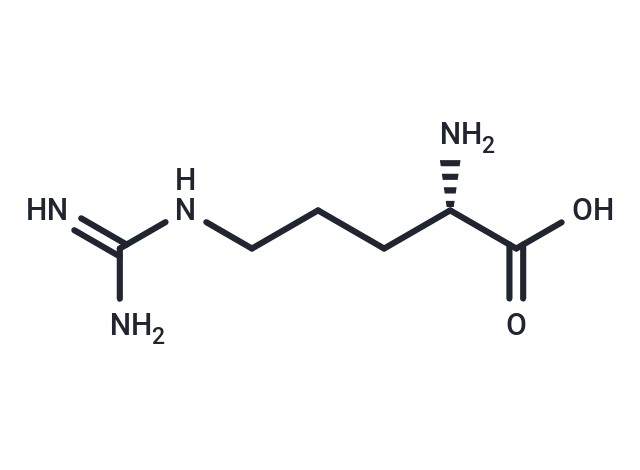Shopping Cart
- Remove All
 Your shopping cart is currently empty
Your shopping cart is currently empty

1. L-Arginine (L-Arg) exhibits anti-atherosclerotic effect. 2. L-Arginine and soy enriched diet are effective in prevention of osteoporosis associated with diabetes mellitus. 3. Exogenous L-Arginine could enhance neonate lymphocyte proliferation through an interleukin-2-independent pathway. 4. A combination of oral L-citrulline and L-Arginine effectively and rapidly augments NO-dependent responses at the acute stage.

| Pack Size | Price | Availability | Quantity |
|---|---|---|---|
| 1 g | $31 | In Stock | |
| 5 g | $40 | In Stock |
| Description | 1. L-Arginine (L-Arg) exhibits anti-atherosclerotic effect. 2. L-Arginine and soy enriched diet are effective in prevention of osteoporosis associated with diabetes mellitus. 3. Exogenous L-Arginine could enhance neonate lymphocyte proliferation through an interleukin-2-independent pathway. 4. A combination of oral L-citrulline and L-Arginine effectively and rapidly augments NO-dependent responses at the acute stage. |
| Alias | L-Arg, (S)-(+)-Arginine |
| Molecular Weight | 174.2 |
| Formula | C6H14N4O2 |
| Cas No. | 74-79-3 |
| Smiles | C(CCNC(=N)N)[C@@H](C(O)=O)N |
| Relative Density. | Ca. 1.36 - 1.56 g/cm3. Temperature:20 °C. |
| Storage | Powder: -20°C for 3 years | In solvent: -80°C for 1 year | Shipping with blue ice. | ||||||||||||||||||||
| Solubility Information | DMSO: Insoluble H2O: 10 mM, Sonication is recommended. | ||||||||||||||||||||
Solution Preparation Table | |||||||||||||||||||||
H2O
| |||||||||||||||||||||

Copyright © 2015-2025 TargetMol Chemicals Inc. All Rights Reserved.